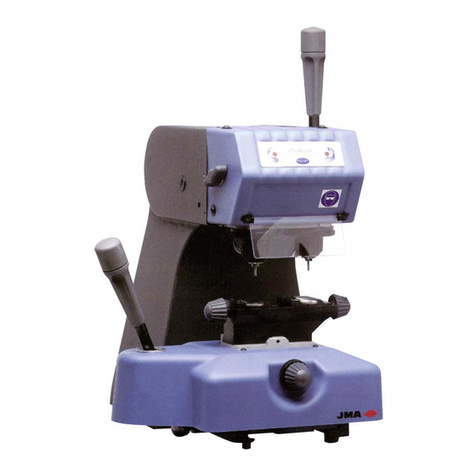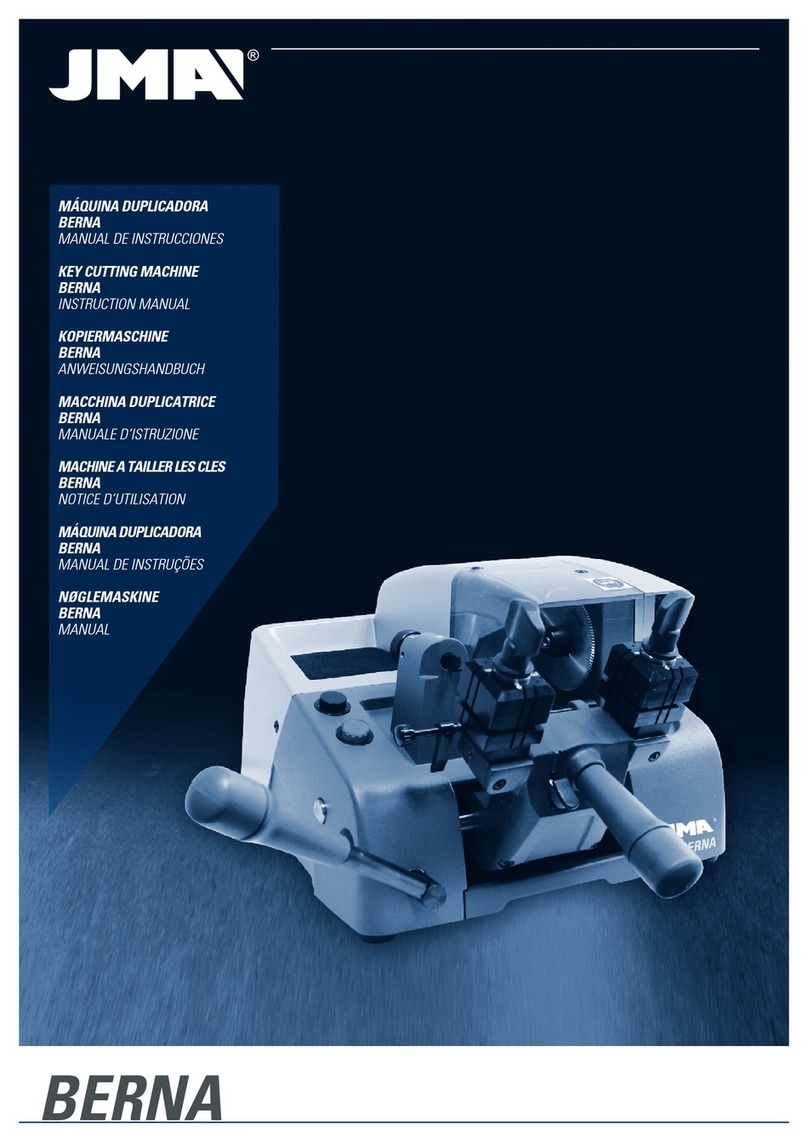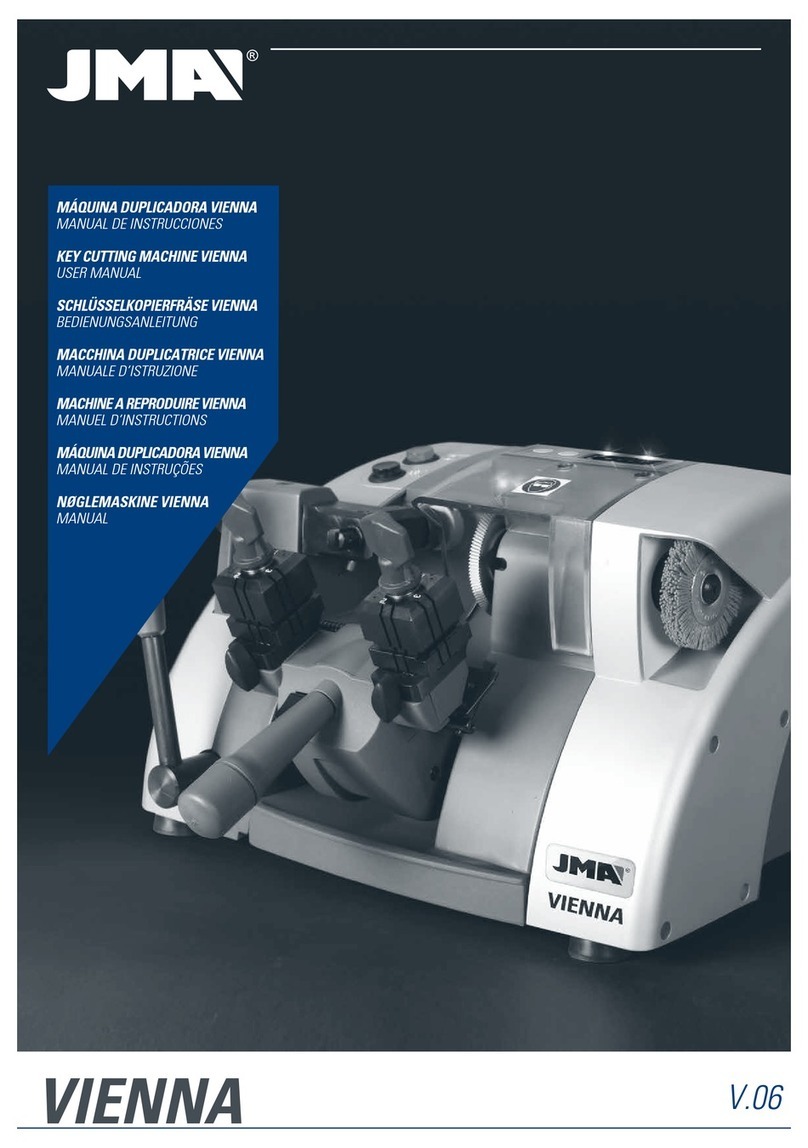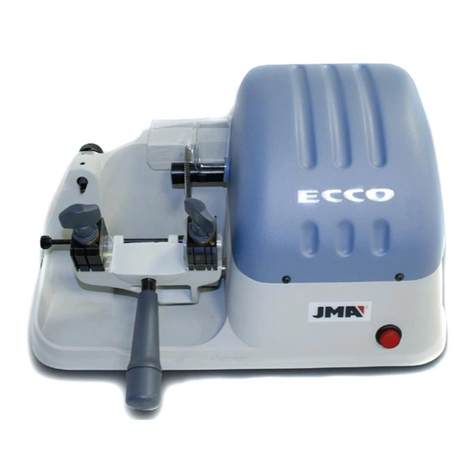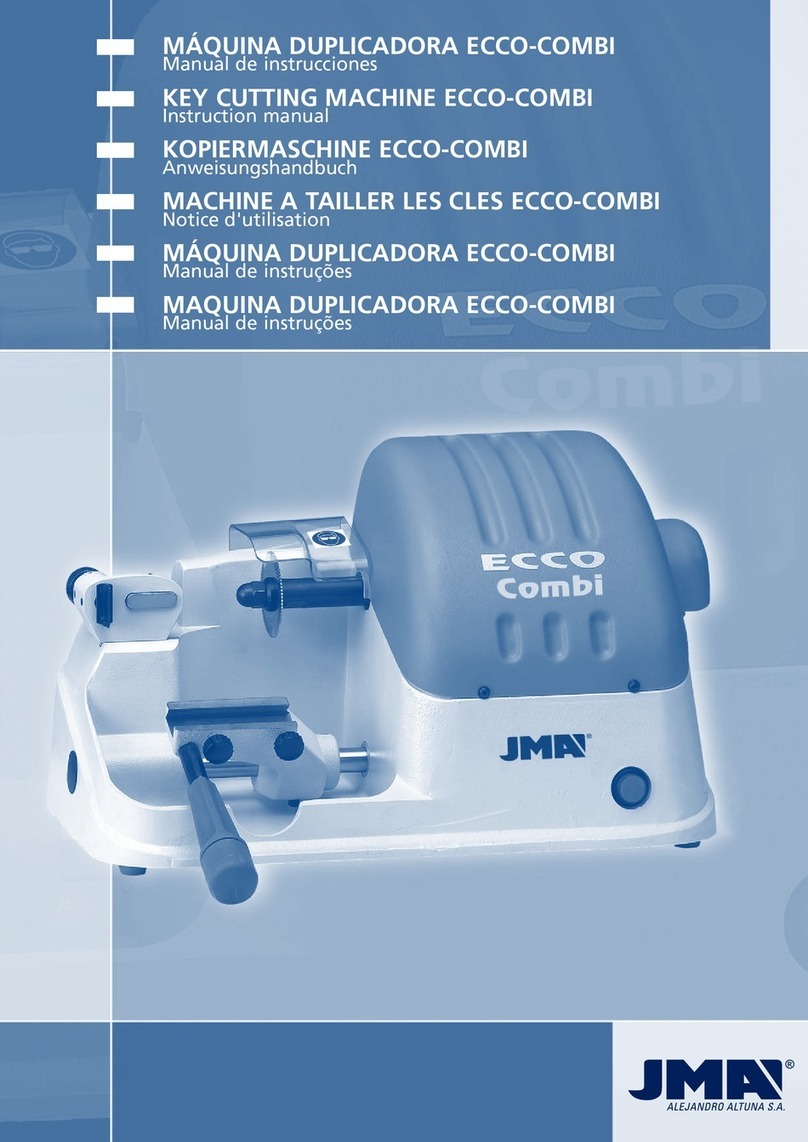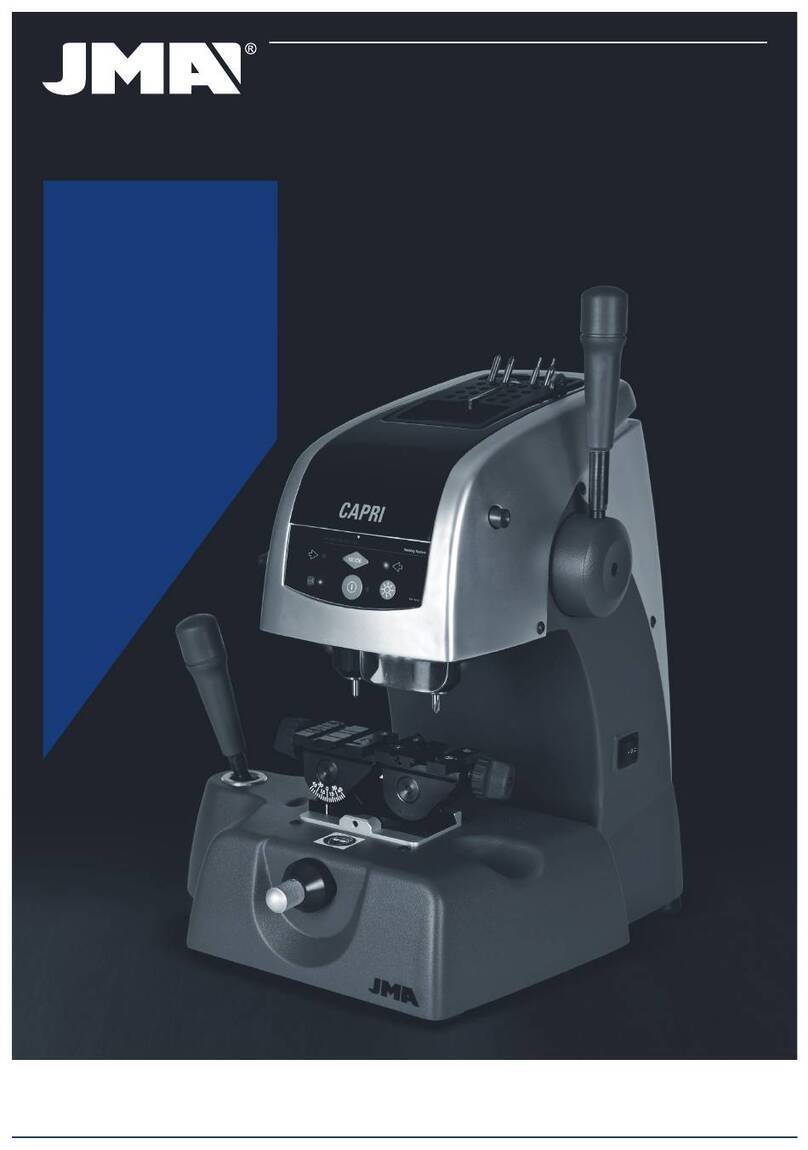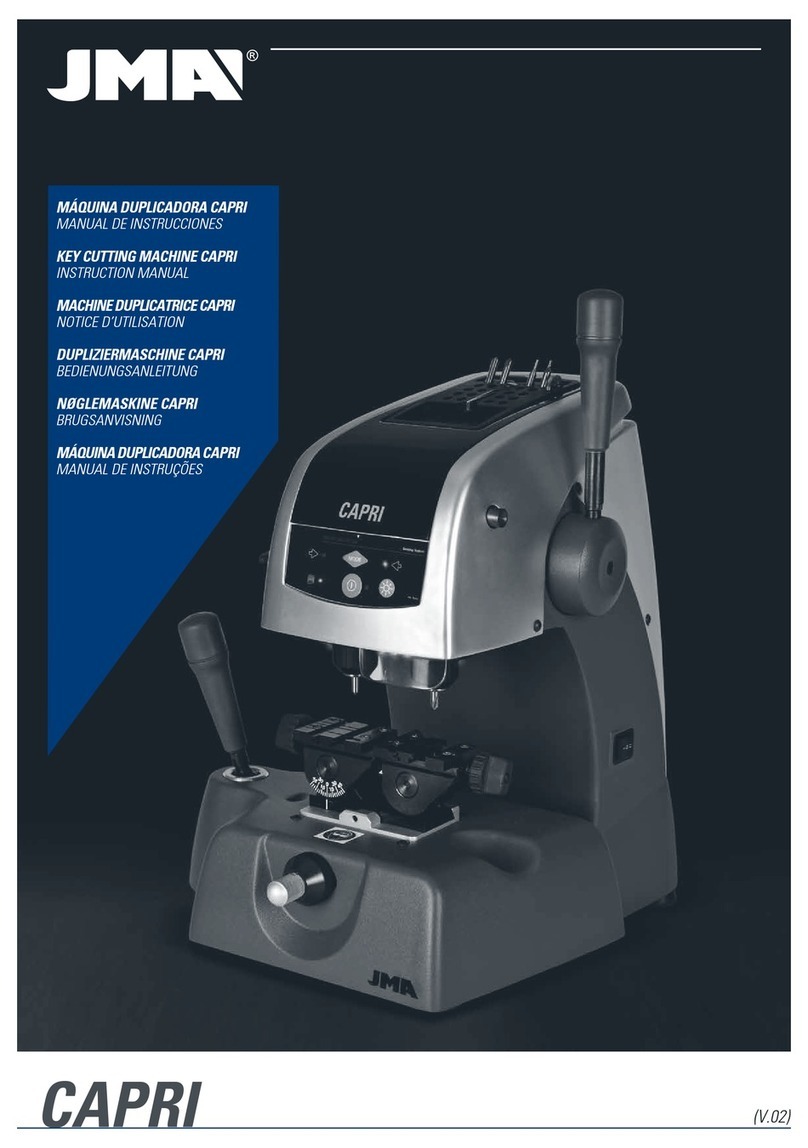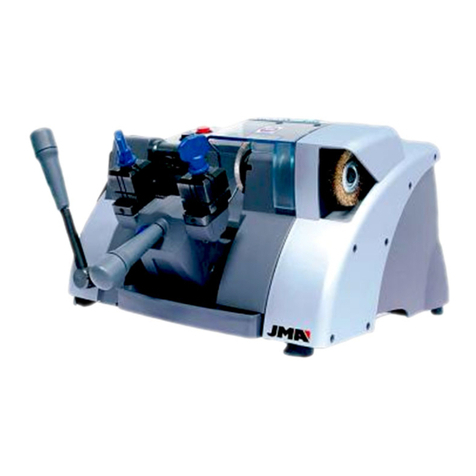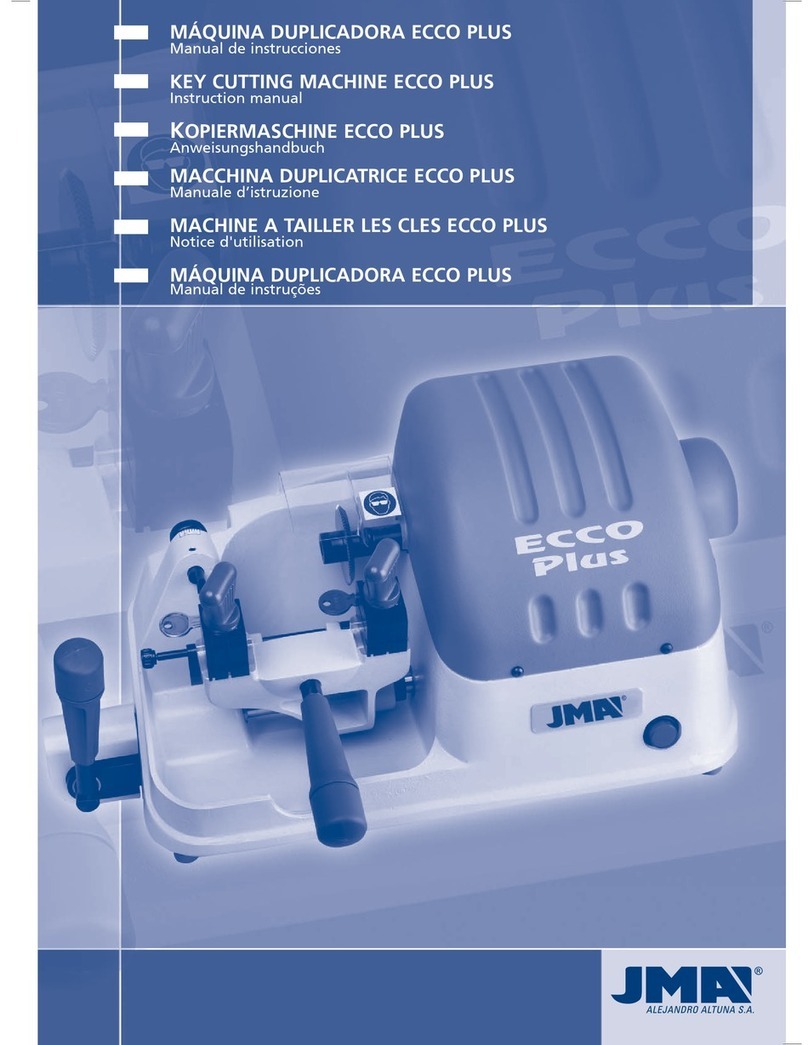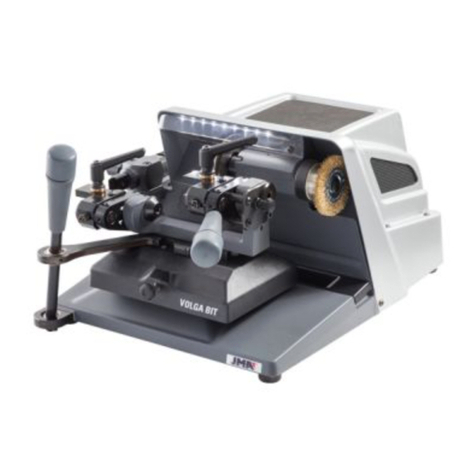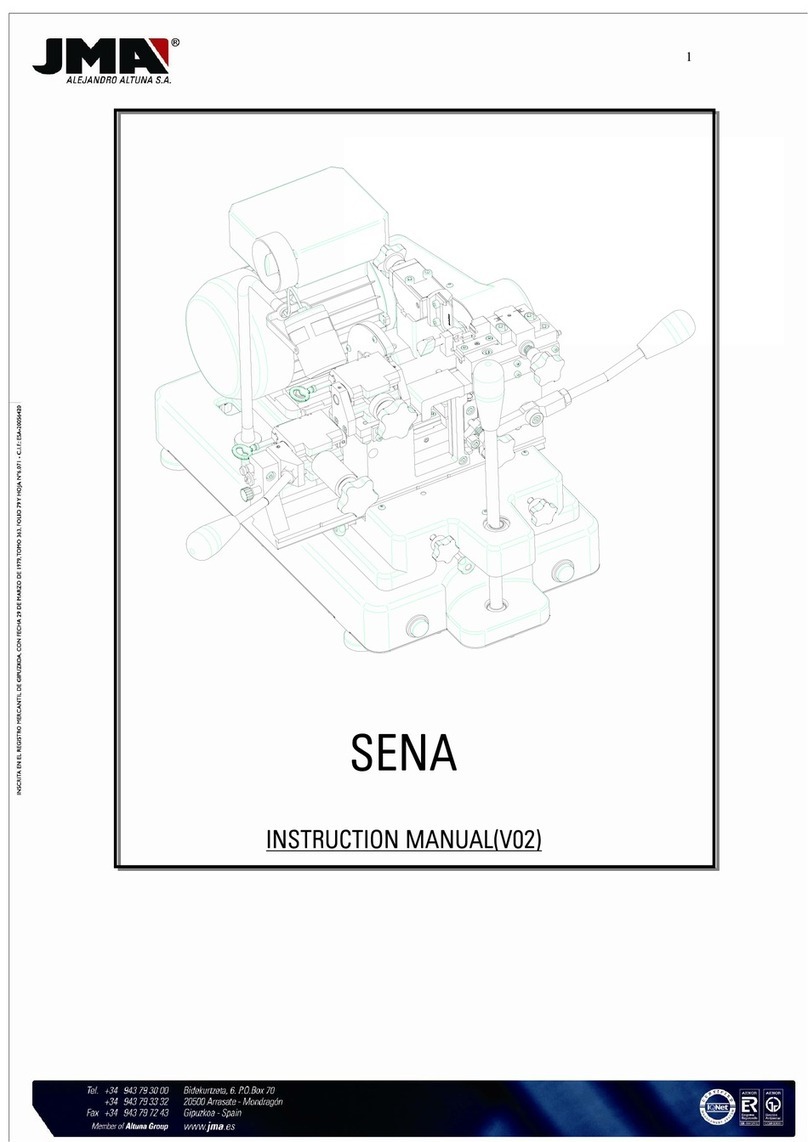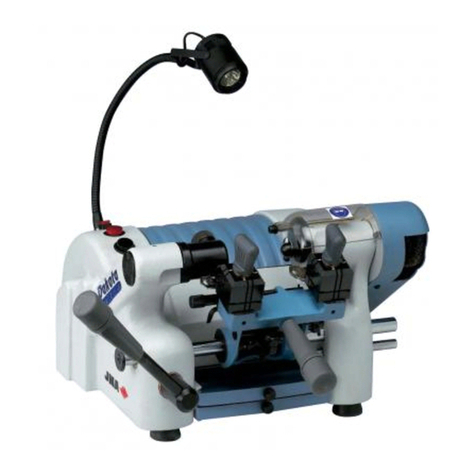
English
3.1.1 Sideways control and adjustment See figure7
1
2
3
4
5
6
7
8
Non-adjustable size 18 spanner.
Keys for sideways and depth adjustment of the
machine.
Wedges to adjust the tip of the key.
Recessed wedges for duplicating cruciform keys.
Set of allen keys (2, 2.5, 3, 4, 5, 6).
Rod with Ø1,20
Rod with Ø1,70
Rod for changing the milling cutter (Ø7x70).
2
1
3
4
5
5
5
5
Current collector
Start button with red light.
Blue lighting switch.
Transformer
Halogen lamp.
Microswitch
Black button for brush
Motor
2.5.2 Electrical circuit See figure 5
2.5.1 Accesories See figure 4
Components and functional parts
2.5
2.5.3 4 sided clamp See figure 6
The clamp is designed to secure a different family of
keys on each side. The diagram shows the duplication
possibilities on each side of the clamp.
Key duplication with key resting on its back:
- Side 1: Keys with normal blade
- Side 2: Keys with narrow blade
Duplication by means of clamping the key to the
guide (outline). Side 3 and Side 4.
Duplication by jeans of clamping the key to the guide
(NEIMAN type)
The main components of the electrical and electronic circuits
are as follows:
Operation
and performance
3
Sideways or depth adjustment of the machine is perfor-
med in the following way:
TAKE CARE! : Before touching anything when adjus-
ting the machine, switch off the main on-off switch so
that the milling cutter cannot begin operating.
Position the adjustment keys (1) in the clamps, so
that the head of the adjustment keys goes in as far
as possible and is touching the inner stop of side 1
or 2 of the clamp.
Next, tighten the clamp.
Move the clamps with the adjustment keys (1) towards
the tracer point (I) and the milling cutter (F), so that
the adjustment keys are in the correct position with
respect to the tracer point and the milling cutter.
This is achieved by pressing the button (P) and gently
moving the carriage nearer to the tracer point (I) and
the milling cutter (F). See figure no. 7.
In the event that the grooves of the adjustment
keys do not coincide properly with the tracer point
and the milling cutter, proceed as follows:
Loosen the support screw (T), and turn the micrometer
screw (K) so that the tracer point support moves to the
left or right so that it corresponds with the groove of
the corresponding adjustment key.
The distance is now perfectly adjusted, with the tracer
point and milling cutter coinciding with the respecti-
ve grooves of the adjustment keys. Next, tighten the
support screw (T), thus locking them in position.
Machine adjustment
3.1
1
2
3.1.2 Control and adjustment of cutting depth
See figure
8
Position the adjustment keys (1) in the clamps, so that the
head of the adjustment key goes in as far as possible and
is touching the inner stop of side 1 or 2 of the clamp.
Move the clamps with adjustment keys (1) towards
the tracer point (I) and the milling cutter (F) so that
the adjustment keys are resting on the tracer point
and the milling cutter. The machine carriage is unloc-
ked by pressing the button (P).
Turn the milling cutter by hand. If the milling cutter
gently scrapes against the adjustment keys then the
machine has been properly adjusted.
If the milling cutter turns freely, i.e. does not scrape
against the adjustment keys, this shows that the
milling cutter is too far back in relation to the tracer
and cutting is not sufficient. On the other hand, if the
milling cutter is blocked by the adjustment keys, this
shows that the milling cutter is too far forward in rela-
tion to the tracer and cutting too deep.
If either of the two situations above occur, proceed
as follows:
Loosen the setscrew (L) which secures the tracer point (I)
and turn the micrometer screw (H). See figure no. 8.
Move the tracer point forwards or backwards until
that milling cutter turns and gently scrapes against
the adjustment key. Next, tighten the tracer point
screw (L). The machine is now in perfect working
order.
9






